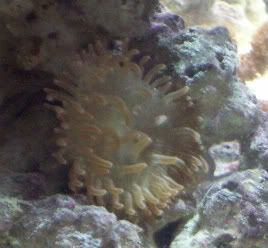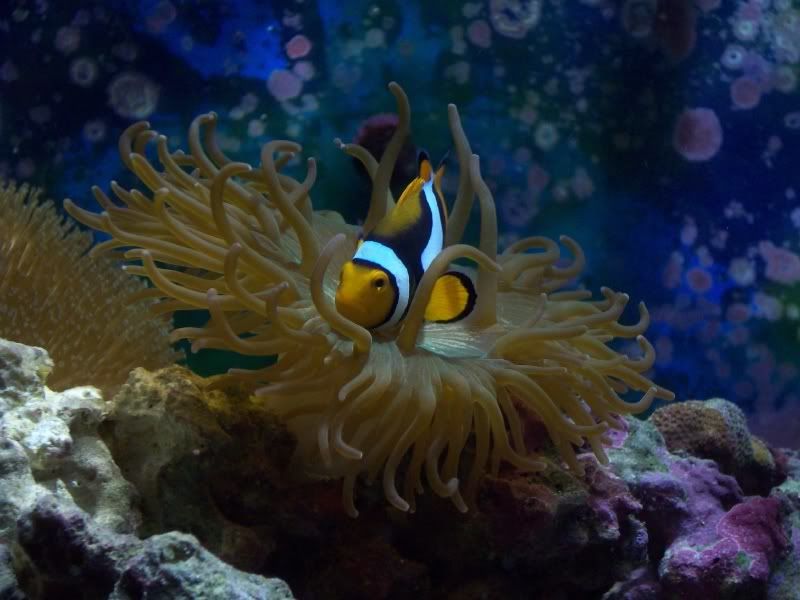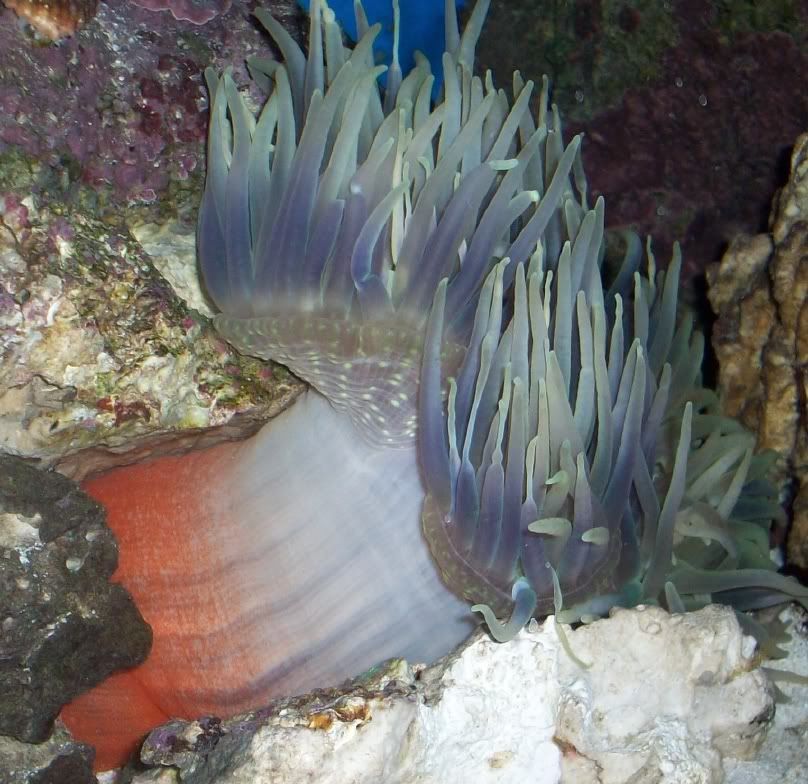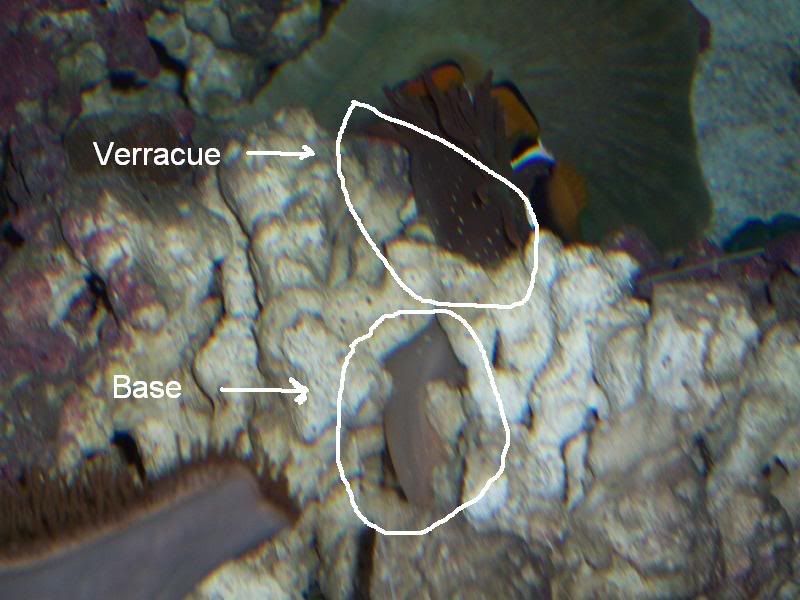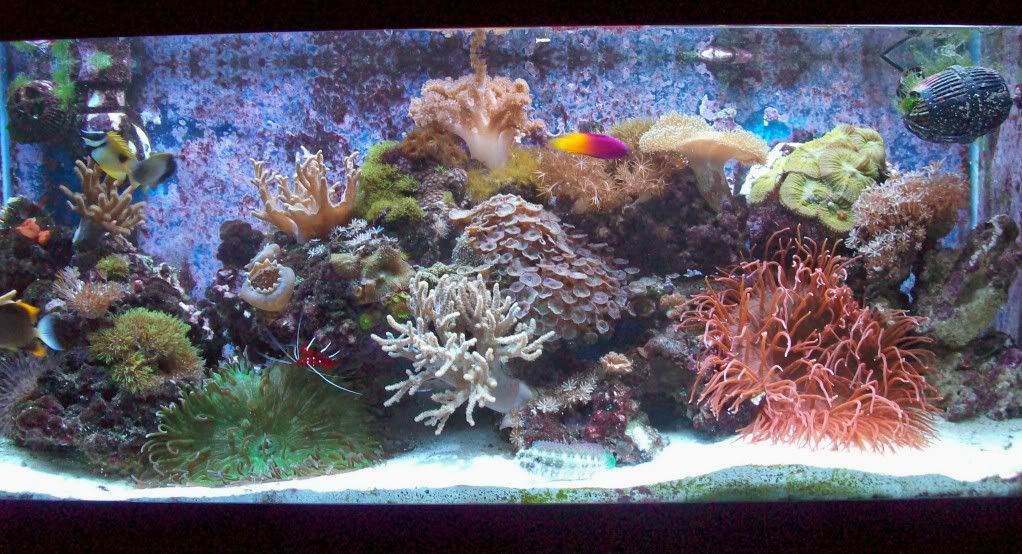Recently purchased an LTA. Here are my observations and corresponding questions:
1. He isn't moving around the tank and initially wedged himself between two rocks with his base extending toward but not touching the sand (sorry no pics, but arrangement was similar to a flower in a thin vase where its stem doesnt touch the bottom, if that helps you visualize what I'm talking about). I moved one of the adjacent rocks which he was using as support but not attached to and he moved down to the sand and buried his foot.
-Do LTA's like wedging between rocks to feel secure or are they "trapped" easily by unique structure?
2. Tentacles and base are white but not translucent.
-I've read many a thread that say white anemones are a cause for concern but most of the LTA's I've seen are white. Is this color normal and/or healthy?
3. He chose a location with moderate and indirect current. His tentacles seem pretty lively and he exhibits a strong feeding response when I feed him krill or minced cocktail shrimp.
-Do these observations denote health? Are these foods ideal, adequate, or harmful? I know it depends on lighting among other things, but what feeding schedule is recommended? Once a week? Multiple times a week? Outcomes of each?
4. He somewhat close (~6") to a couple different mushroom colonies.
-Is this ok or do I need to move the shrooms?
To save you guys some time and/or dissuade reefers who like to talk-down to fellow reefers, here are some things I am already fully aware of:
-put simply, anemones are difficult to keep and they're not for newly established tanks -- mines been up for a year (not extremely old but its definitely mature)
-You've got to do your research before getting an anemone -- I've read a few books on the topic and spent more time than I'd like to admit talking to LFS owners and reading forums. I'm posting because I've come across a great deal of outdated, conflicting, and just plain wrong information from all three of these sources.
Tank:
60 gal. cube w/ internal overflow & 20 gal. sump
aquaticlife 4xT5HO fixture
koralia 1050 powerhead
vertex 100 skimmer
200 micron filter sock
carbon
Livestock:
60 lbs live rock
60 lbs live sand (fine)
ocellaris clownfish (small)
green mandarin (smaller)
hippo tang (small)
cleaner shrimp, mithrax crab, assortment of snails and bl. leg hermits
Hammer, frogspawn, various mushrooms, zoanthids
Parameters:
Ammonia - 0
Nitrite - 0
Nitrate - not zero but damn close
Sp. Grav. - 1.024
Temp - 78
1. He isn't moving around the tank and initially wedged himself between two rocks with his base extending toward but not touching the sand (sorry no pics, but arrangement was similar to a flower in a thin vase where its stem doesnt touch the bottom, if that helps you visualize what I'm talking about). I moved one of the adjacent rocks which he was using as support but not attached to and he moved down to the sand and buried his foot.
-Do LTA's like wedging between rocks to feel secure or are they "trapped" easily by unique structure?
2. Tentacles and base are white but not translucent.
-I've read many a thread that say white anemones are a cause for concern but most of the LTA's I've seen are white. Is this color normal and/or healthy?
3. He chose a location with moderate and indirect current. His tentacles seem pretty lively and he exhibits a strong feeding response when I feed him krill or minced cocktail shrimp.
-Do these observations denote health? Are these foods ideal, adequate, or harmful? I know it depends on lighting among other things, but what feeding schedule is recommended? Once a week? Multiple times a week? Outcomes of each?
4. He somewhat close (~6") to a couple different mushroom colonies.
-Is this ok or do I need to move the shrooms?
To save you guys some time and/or dissuade reefers who like to talk-down to fellow reefers, here are some things I am already fully aware of:
-put simply, anemones are difficult to keep and they're not for newly established tanks -- mines been up for a year (not extremely old but its definitely mature)
-You've got to do your research before getting an anemone -- I've read a few books on the topic and spent more time than I'd like to admit talking to LFS owners and reading forums. I'm posting because I've come across a great deal of outdated, conflicting, and just plain wrong information from all three of these sources.
Tank:
60 gal. cube w/ internal overflow & 20 gal. sump
aquaticlife 4xT5HO fixture
koralia 1050 powerhead
vertex 100 skimmer
200 micron filter sock
carbon
Livestock:
60 lbs live rock
60 lbs live sand (fine)
ocellaris clownfish (small)
green mandarin (smaller)
hippo tang (small)
cleaner shrimp, mithrax crab, assortment of snails and bl. leg hermits
Hammer, frogspawn, various mushrooms, zoanthids
Parameters:
Ammonia - 0
Nitrite - 0
Nitrate - not zero but damn close
Sp. Grav. - 1.024
Temp - 78

